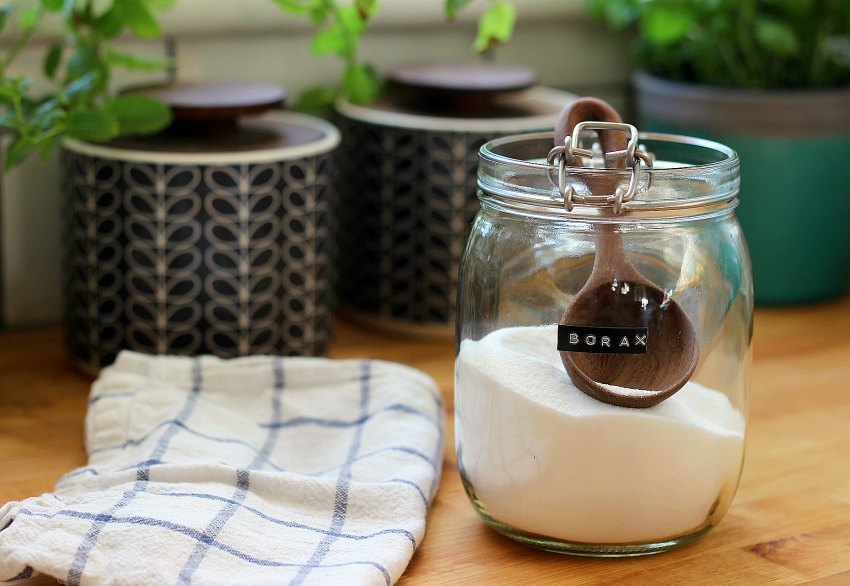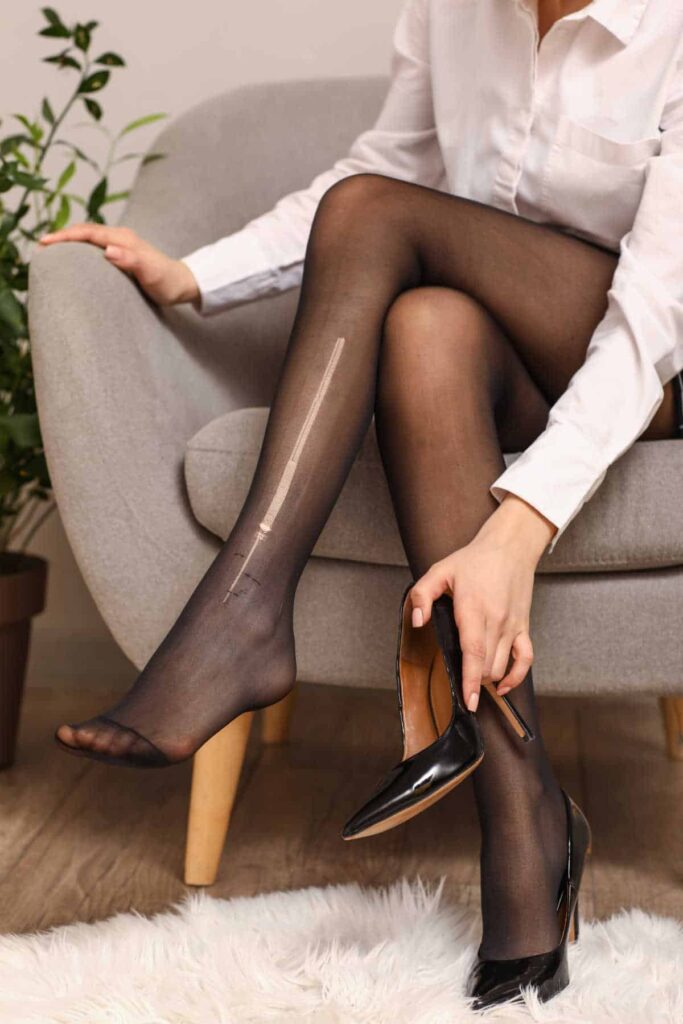Eco-Friendly Alternatives To Freezer Bags To Know
To support the running costs of Moral Fibres, this post may contain affiliate links. This means Moral Fibres may earn a small commission, at no extra cost to readers, on items purchased through these links.
Looking to cut your plastic waste? Try these clever eco-friendly alternatives to freezer bags – from beeswax wraps to silicone bags and a whole lot more.
One of my top food waste tips is to make friends with your freezer. Freezing food not only reduces food waste and lowers your food bills but also significantly benefits the environment.
After all, food waste is responsible for 8% to 10% of greenhouse gas emissions worldwide. To put that figure into perspective, the aviation industry contributes around 2% of the world’s carbon dioxide (CO2) emissions.
Food waste has a massive impact on the planet, and any steps we can take to minimise it is only a good thing. But as well as freezing your food, you can also help the environment by reconsidering how you freeze your food.
Take freezer bags. Every year, we get through billions of freezer bags in the UK alone. These convenient but often single-use plastic bags contribute to pollution and waste. Plus they’re made from plastic, which is derived from non-renewable fossil fuels.
Thankfully, there are plenty of eco-friendly alternatives to freezer bags available that not only help the planet but also keep your food fresh. Let’s take a look at how to make freezing greener.
Sustainable Alternatives To Freezer Bags
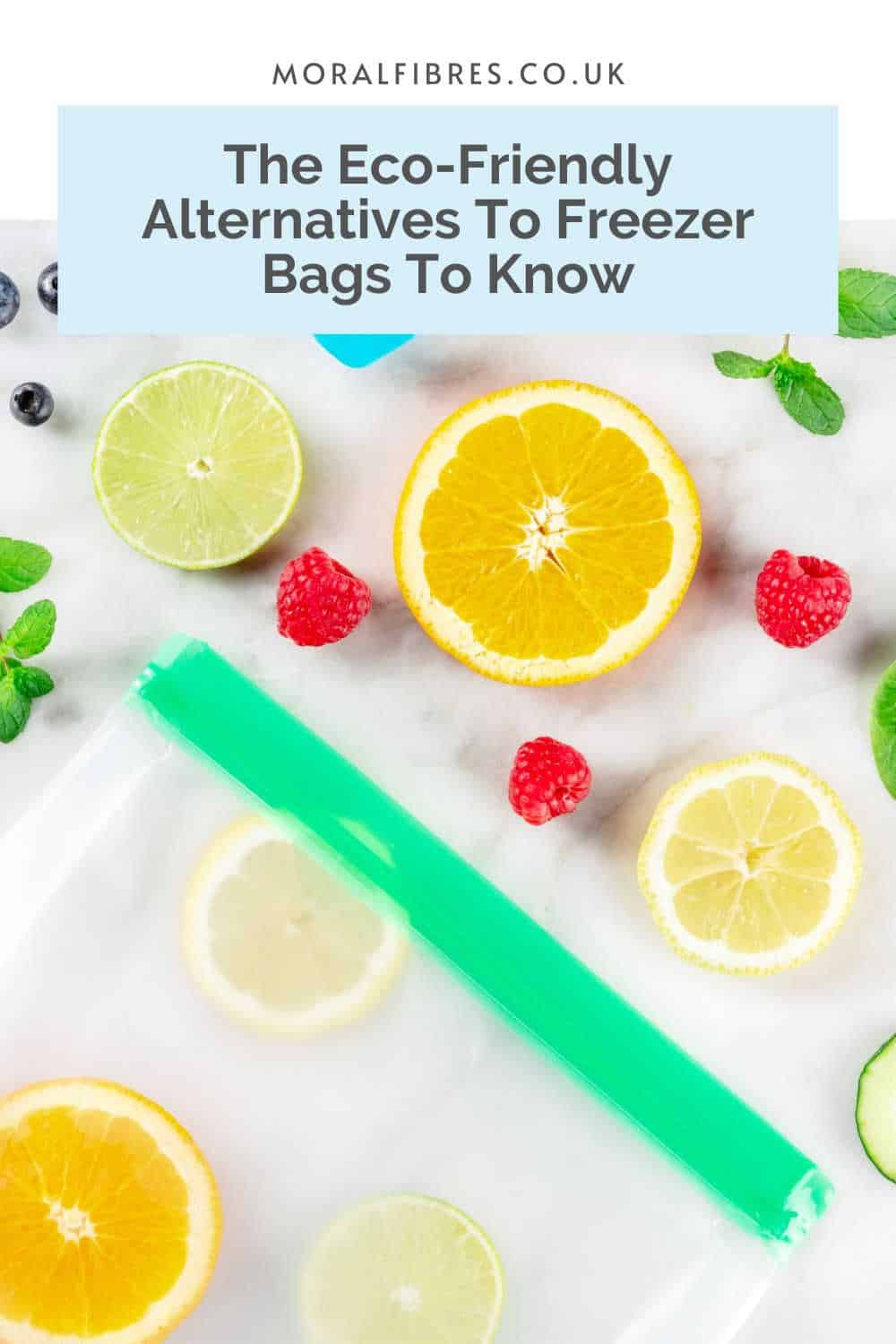
Ready to fight food waste and plastic waste at the same time? Here are my top sustainable alternatives to freezer bags to know. Use the links to skip to a specific section of this post, or keep scrolling for the post:
- Plastic Tubs & Bags You Already Own
- Glass Containers
- Reusable Silicone Bags
- Beeswax Wraps
- Vegan Food Wraps
- Stainless Steel Containers
- Glass Jars
- Recycled Tin Foil
Plastic Freezer Bags & Tubs You Already Own

I always advocate that you should never bin things in the name of sustainability, so the most sustainable option is always to use what you already have.
So if you have a stash of freezer bags, then remember that they can be reused multiple times. Whilst they aren’t made to be reused indefinitely, if you take care of them, they can last much longer than their single-use nature. This is much more environmentally friendly than binning your box of bags, and buying something new.
To wash your freezer bags turn them inside out (so that you can get into all the nooks and crannies) and then wash them using cool or warm water, washing-up liquid and a sponge or cloth. Hot water can damage the plastic, so it is best avoided.
Once clean, you should then let them air-dry. I find placing them over a wooden spoon helps the air to circulate. It’s best to then store them flat, rather than scrunched up, to help further prolong their life.
The same goes for your old plastic Tupperware containers. You can keep using these to freeze your food until they break.
Glass Containers

I’ve been using glass storage containers for a few years now and found they can stand up all that my freezer can throw at them. I’ve tried a few different brands and really rate the glass storage containers available at John Lewis.
They are incredibly durable, freezer-safe, reusable and non-toxic. The secure lid helps to keep your food fresh and free from contamination. Plus, they are easy to clean and can be used for a variety of purposes beyond the freezer – and can even be used in the oven (up to 250°C, excluding the lid) and microwave.
The main thing I love about them is that, unlike plastic Tupperware, these storage containers don’t take on the colour of whatever food you’ve been storing in them. So if you’ve stored food that contains turmeric, it doesn’t stain yellow, and if you store food that contains tomato then it doesn’t turn red. Gamechanger!
The only thing I don’t love is that they take up a little more room in the freezer and your storage cupboards, compared to freezer bags.
Reusable Silicone Bags

Silicone bags have gained popularity as a sustainable alternative to plastic bags. Made from food-grade silicone, these handy bags are reusable, dishwasher-safe, and freezer-friendly – suitable for long-term storage (up to 12 months).
They come in various sizes and styles, allowing you to store both solids and liquids with ease. Additionally, silicone is a durable material that can withstand extreme temperatures, making it ideal for freezer storage. Plus, they are easier to store than bulky tubs.
There are quite a few different brands out there offering reusable freezer bags:
- Stasher (available at the Stashers Amazon Shopfront)
- Food Huggers (available at Big Green Smile, from £9.95 a bag)
- Green Island (available at Veo, from £7.95 a bag)
- Homeware retailer Dunelm also makes its own budget-friendly brand of reusable freezer bags, at just £6 for 6 bags.
I’ve been using Stasher bags for quite some years now, and I love them. I use them for all sorts of food storage – from freezing food to popping lunch in when I’m out and about, to storing chilled or dried food in. I pop them in the dishwasher when they need to be cleaned, and they always come out looking great.
Just make sure they are completely dry before storing them to prevent mould growth. I sit mine on an upturned glass until it’s fully dry.
They’re incredibly versatile, so I even use them when I’m travelling. Here I pop liquid products in the bags, such as sunscreen, to contain any potential leakages.
There’s zero learning curve with silicone freezer bags. Just use these as you would a standard freezer bag, and wash after each use.
Despite heavy use, my bags aren’t showing any signs of wear. This means that whilst the upfront cost was much more than a pack of standard freezer bags, I think overall the cost per use has been much lower. Plus, that cost per use will continue to lower the more I use them.
Beeswax Wraps
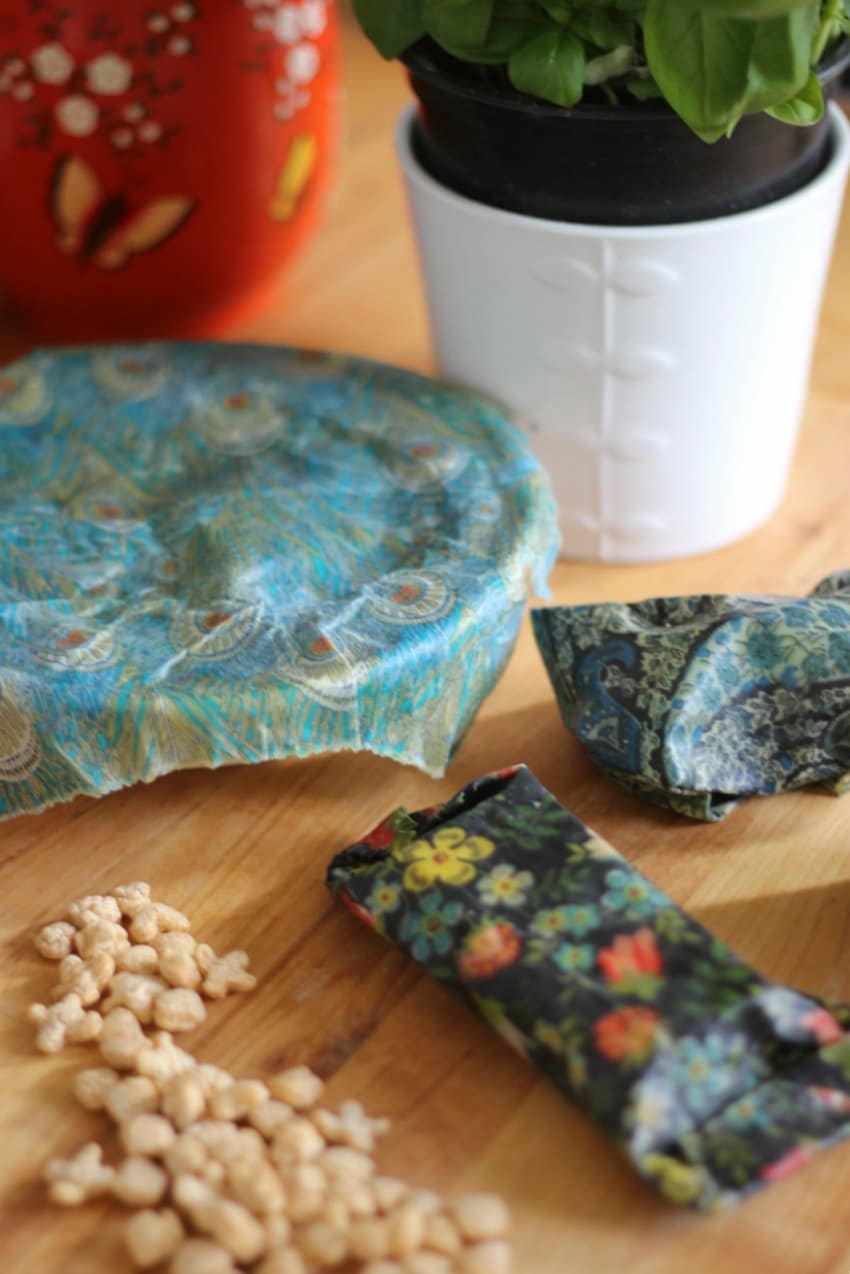
Beeswax wraps are a natural and eco-friendly alternative to plastic wraps and freezer bags. Made from cotton fabric coated with beeswax, these wraps are washable, reusable, biodegradable, and compostable.
To use them, simply wrap your food in the beeswax wrap and use the warmth of your hands to mould it into shape. The wraps create a breathable barrier that helps preserve the freshness of your food while reducing plastic waste.
You can freeze food that has been wrapped in a beeswax wrap. Through trial and error, I’ve found it’s best for short-term freezer storage. Aim for no more than one month, to help preserve the integrity of the beeswax.
Beeswax wraps are incredibly easy to make – I’ve got a handy tutorial on how to make beeswax food wraps. But don’t worry if you’re not DIY-minded, they are easy to pick up online. Some of my favourite places to pick up beeswax wraps include:
To help your wraps last as long as possible, I’ve put together a handy guide on how to care for beeswax wraps. This talks you through all my top tips to keep them in the best condition.
Vegan Food Wraps

If you follow a fully plant-based lifestyle then beeswax will be a no-go to you. Don’t worry, you can still embrace the joy of reusable food wraps as many brands offer wraps made from vegan waxes, rather than beeswax.
These are reusable, washable and freezable and work the same way as beeswax wraps, just without the beeswax. Again, I would use them for short-term freezer storage only (no more than one month).
Places to pick up vegan food wraps include:
Stainless Steel Containers

Stainless steel containers, like this set from Elephant Box (available at Buy Me Once), are another sustainable and eco-friendly option for storing your food in the freezer.
These containers are durable, lightweight, and resistant to rust and corrosion. They are also available in various shapes and sizes, making them suitable for storing a wide range of foods. Just leave a gap at the top to allow any liquids space to expand as they freeze. And as many brands aren’t leakproof, make sure you store your containers upright in the freezer.
Despite being a sustainable alternative to freezer bags, to be honest they are not the storage solution that I turn to first.
They can be expensive to buy and bulky to store. And unlike glass storage containers, you can’t use them in the oven or microwave to reheat your food. So they definitely lose points on practicality. However, if you’re looking for a fully recyclable and plastic-free alternative then it’s an avenue to explore.
Glass Jars
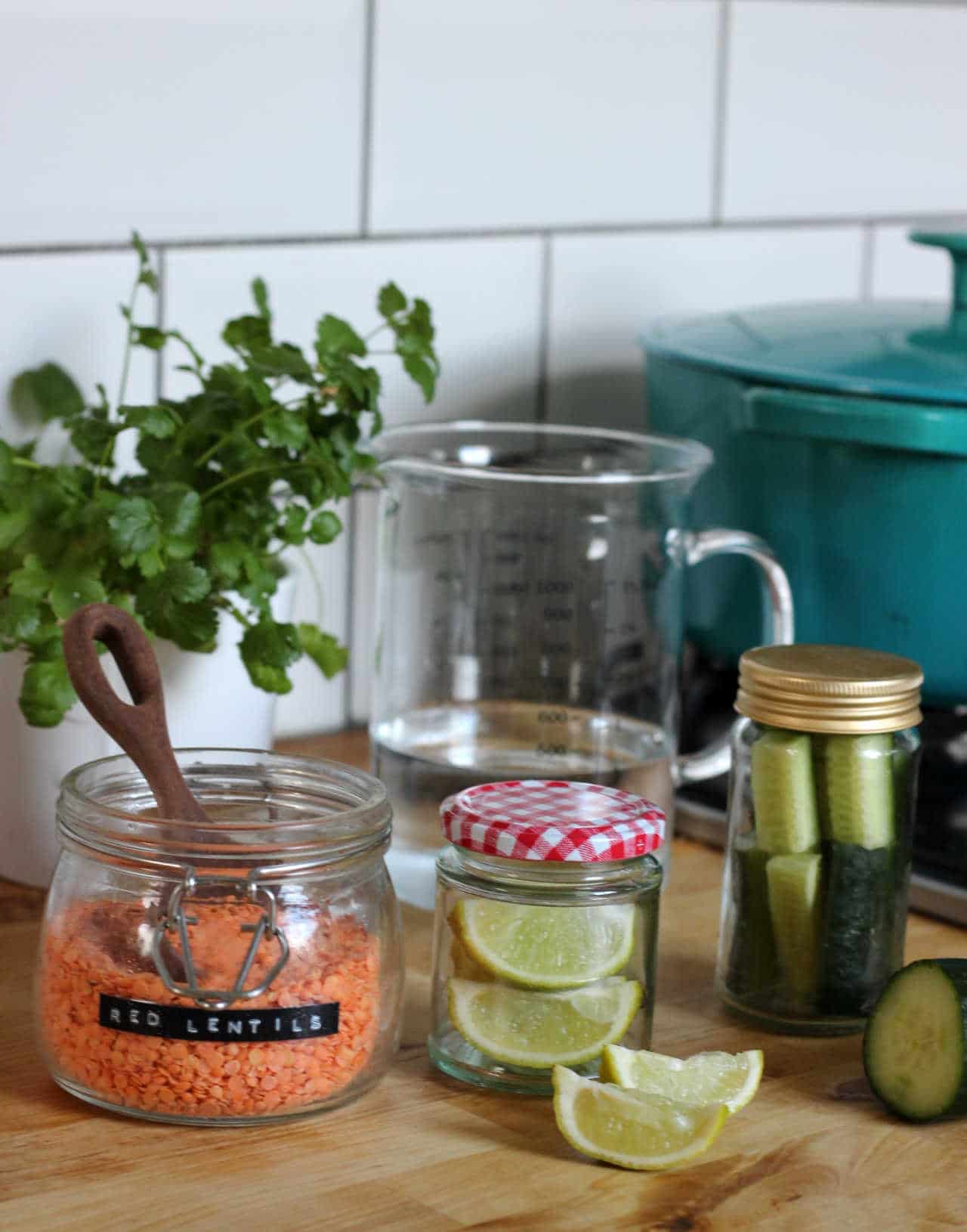
Glass jars aren’t just for jam! Most jars can also be used for freezer storage. Jars are reusable, dishwasher-safe, and come in a variety of sizes. This makes them perfect for storing everything from soups and sauces to fruits and vegetables.
Choose wide-mouthed jars for easy filling and access to your frozen goods. I’ve found that old peanut butter jars and vegan mayonnaise jars work particularly well, and mean you don’t need to buy anything new.
I have found that there are four golden rules when it comes to freezing food in glass jars to avoid breakages:
- Only use wide-mouthed jars. Bottles are a no-no, as they don’t offer enough space for food or liquid to expand as it freezes.
- Do not overfill your jar. Leave around two inches of headspace, to offer space for your food to expand as it freezes.
- Make sure your food is fully cooled before placing it in the freezer. This avoids any temperature shocks that can put stress on the glass.
- When you first put your food in the freezer, place the lid on your jar loosely. Once completely frozen, you can then tighten it. This gives space for your food to expand.
Recycled Tin Foil
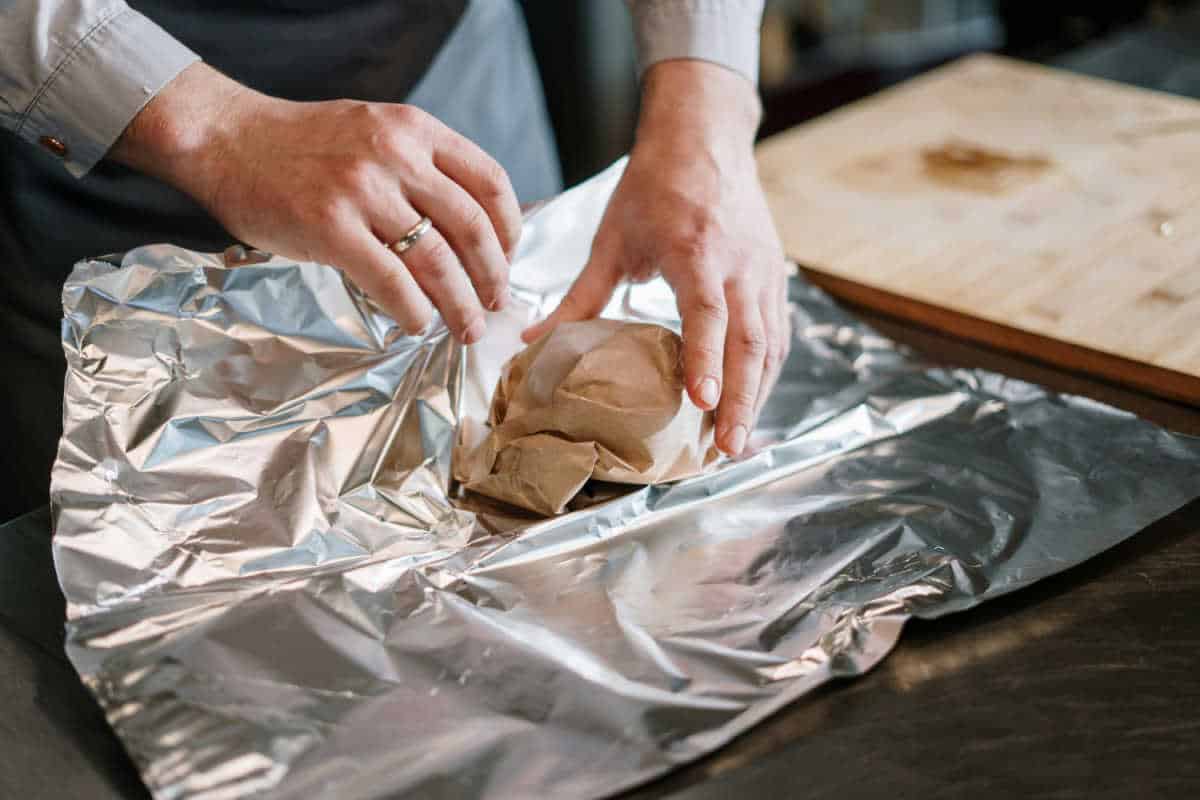
For items that are too bulky to fit in any reusable storage containers, wraps or jars, then a more eco-friendly alternative to freezer bags is recycled tin foil, like this one from Bower Collective.
Recycled tin foil is made from recycled aluminium, reducing the need for virgin materials. Plus it uses 95% less energy to produce than traditional foil manufacturing, making it a more sustainable option than standard tin foil.
Recycled tin foil provides an effective barrier against moisture, bacteria and air, helping to keep food fresh without the need for plastic. It is suitable for freezing most foods in the long term (as much as 12 months) – apart from anything highly acidic, such as citrus fruit.
However, it’s not my top option. Whilst it is made from recycled materials, tin foil is often treated as a single-use product. Yet it can be carefully washed and reused again. And despite being recyclable, a lot of tin foil does end up in landfill. In fact, more than one in five (22%) UK adults do not recycle household aluminium.
Consider recycled tin foil your last resort if none of the other options are suitable.
To Sum Up
Freezing food is a great way to fight food waste and its impacts on the environment. However, you can go further and help the planet even more by considering what you freeze your food in.
Plastic freezer bags don’t have to be your first choice when it comes to freezing your food. There are heaps of eco-friendly alternatives to traditional plastic freezer bags out there. Whether you opt for glass or steel storage containers, silicone bags, food wraps, recycled foil, or budget-friendly glass jars, there are heaps of ways to kick single-use plastic to the kerb.
PS: Check out my guide to eco-friendly bin bag alternatives and sustainable alternatives to kitchen roll for more ways to cut your plastic usage in the kitchen.
Found this post useful? Please consider buying me a virtual coffee to help support the site’s running costs.


